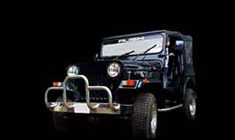News
1996 Rover Mini Cooper: Ownership Experience
I have not come across too many cars with such history and so much paperwork. Each time I look at the car, it just makes me feel so proud to own this piece of British motoring history.
BHPian 51morris recently shared this with other enthusiasts.
Hello folks! Hope you are doing well and keeping safe.
This is a quick thread on my ownership of a Rover Mini Cooper (1996), a.k.a “Winston”. Since the Mini is one of the icons of the motoring world, I thought I must start with a quick history of the Mini and the events that led to the creation of this car.
DISCLAIMER: A lot of my understanding of the history of the Mini is from a wonderful book by Giles Chapman – Mini (60 years). Full credits to the author/publishers of this book, including facts and especially images.
The Suez Crisis and the need for a new breed of cars
Back in the 1950s, British roads were peppered with reasonably decent cars such as the Morris Minor, Austin A30 and the Ford 100E Anglia.
However, all this changed with the withdrawal of British troops from the Suez Canal in 1957. This led to a massive shortage of fuel supply. This brought about the need for a new car that could operate on the very barest of resources.
Designing a car like no other
While Sir Alec Issigonis (who also designed the hugely popular Morris Minor) and his team were in truly unchartered waters, they were clear, right from the onset, about what they were building. Issigonis knew for a fact that this would be a small car, yet spacious enough to seat 4 adults along with luggage. He wanted 80% of the interior space to be provided to passengers and luggage.
In order to keep the footprint of the car small, he decided that the car would be no more than 10 feet in length. With such a small footprint, the second requirement (of having to seat 4 adults along with luggage) was quite a challenge. The way he overcame this hurdle was simply brilliant.
Firstly, he decided that the 4-cylinder engine would be mounted transversely, feeding power directly to the front wheels. This was a first for the time as all cars had engines mounted front to back (and powered the rear wheels). The transverse engine immediately freed up space. The next challenge was the gearbox, which was normally mounted behind the engine – again eating into the cabin space. Issigonis decided that the gearbox would be mounted under the engine, thereby freeing up further space in the cabin.
Next, the wheels – these were pushed outwards to the extremities of the car. This not only resulted in more interior space but also had a remarkably positive impact on the overall handling of the car.
Finally, the doors/windows. Issigonis was obsessed with maximising cabin space and therefore decided that roll-down windows would need additional space in the door pads for the glass and the wind-up mechanism. Hence, the Original Mini came with sliding windows for the doors. The rear windows would only bevel out to let air in. This directly translated into massively deep door pockets.
For a car so small, it was unbelievably spacious on the inside. Such was the result of his obsession with space-saving.
Here are some early designs of Issigonis’ brainchild.
Copyright: Author/Publisher of Mini – 60 years
The cut-out view clearly shows the 80%-space-to-passengers-and-luggage concept.
Copyright: Author/Publisher of Mini – 60 years
A brief timeline of the Mini
The first Mini was launched in 1959 as the Austin Se7en and the Morris Mini-Minor. The car took the motoring world by storm and was received with wide-eyed amazement. It was a brilliantly designed car with extremely compact exterior dimensions that could swallow up a lot of luggage and seat 4 adults comfortably.
Copyright: Author/Publisher of Mini – 60 years
It handled like absolutely nothing on the roads at the time. Motoring journalists who drove the car just could not stop raving about how brilliantly it handled even though it only had an 899cc engine putting out a modest 43 BHP.
The Mini became an instant hit and went on to become hugely popular over the next 60 years (and still counting)! It wasn’t just the most common car in Britain but was the popular choice of celebrities around the world. Everyone wanted to own a Mini!
Over the years, many variants of the Mini were launched, including the Cooper S, launched in 1961, with a beefed-up engine/mechanicals and twin carbs. These went on to win the Monte Carlo rally beating much larger and more powerful cars. To this day, these early-day Cooper Ss are the most sought after and worth a huge amount of money.
Here’s a picture of the original Austin Mini Cooper S.
Copyright: Author/Publisher of Mini – 60 years
Many decades and many models rolled by. Rover owned and manufactured the Mini and sales were declining sharply. In the early 1990s, Rover decided to bring back the Cooper brand and launched the Rover Mini Cooper (and the Mini Cooper Sport) with a 1.3-litre MPI engine, pushing out 6 BHP. The car once again resurrected the fading interest in the brand and these were scooped up instantly. Here’s a picture of the mid-90s Rover Mini Cooper.
Copyright: Author/Publisher of Mini – 60 years
This is the exact model of the Mini that I bought! More on this in the next section.
In 1997, BMW finally bought Rover out. While they decided to get rid of most of Rover’s brands/models, they realised that the Mini was a brand name with huge potential. They, therefore, retained the Mini brand and started working on a complete redesign of the Mini. This was finally launched as the BMW Mini in 2001 and this car, like its predecessor, took the world by storm.
Copyright: Author/Publisher of Mini – 60 years
From then onwards, there has been no looking back for BMW with the Mini. While the cars have gotten bigger and bigger over the years, a Mini/Mini Cooper is still considered one of the most stylish and recognisable cars and continues to sell in huge numbers globally.
Introducing Winston, my 1996 Mini Cooper
I was fortunate to find a wonderful and very original Mini Cooper. This was owned by a kind lady who bought it in 1996 and did 42,000 gentle miles in it.
Here are some pictures of the car.
What makes a car truly special is the way it has been looked after. With this Mini, it was clear that the lady loved her car. Such was her passion and love for the car that I was handed over a briefcase full of paperwork. It was only when I started going through it in detail, I realised that I was fortunate enough to get my hands on a time capsule!
This is the folder containing all the documentation.
The documents are clearly categorised as “Mini Purchase”, “MOT” (yearly fitness certificate in the UK), “Service”, etc.
When I looked through the “Mini Purchase” folder, I was shocked to see the following:
- Original brochure that was handed over to her when she went to the showroom
- Original sales receipt dated October 24, 1996
- Original booklet
- Original instruction manuals
- AA roadside assistance membership cards
Original Invoice:
Showroom brochures:
Handbook that came with the car:
 Instruction manuals and warranty cards:
Next up was the MOT folder which contains original certificates of EVERY SINGLE MOT done in the past 25 years, all arranged in chronological order.
Then there is the TAX folder – again, every tax reminder and tax-paid receipts for the past 25 years! In the UK, before road tax went online, there used to be a tax disc provided to the owner which had to be stuck onto the windshield, clearly visible to the rozzers from the outside. The car comes with every single tax disc from 2004 to 2015!
Finally, the service history – this folder contains receipts of every single service or repair done on the car. A nice surprise in this folder were letters of correspondence between the lady and the dealership. These were complaints that were sent to the dealership for shoddy washing of the car post service and the dealership’s apology in response!
I have not come across too many cars with such history and so much paperwork. Each time I look at the car, it just makes me feel so proud to own this piece of British motoring history.
I was even handed over two sets of original keys and each set came with the original immobiliser fob.
This is an unrestored car, lovingly preserved in its original condition. Whilst most of the car (99%, I’d say) is in fantastic condition, the fact that it is unrestored and was genuinely used as a daily runner, there are tiny bits that will eventually need work. I’d rather own a genuine car like this than one that has had a nut and bolt restoration, thereby, losing its originality completely.
Continue reading 51morris' review for BHPian comments, insights & more information.
- Tags:
- Indian
- Member Content
- Cooper





_0.jpg)











